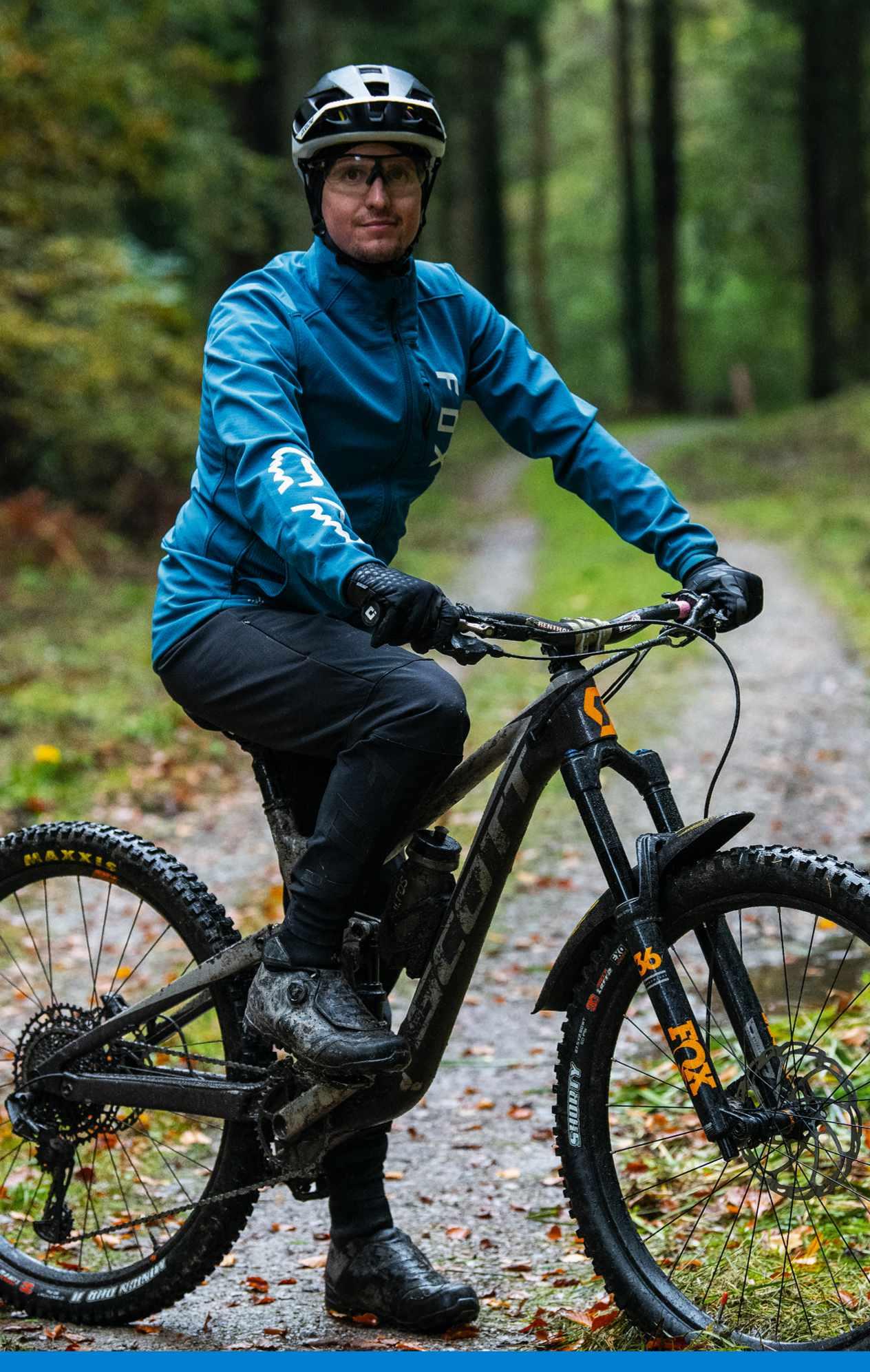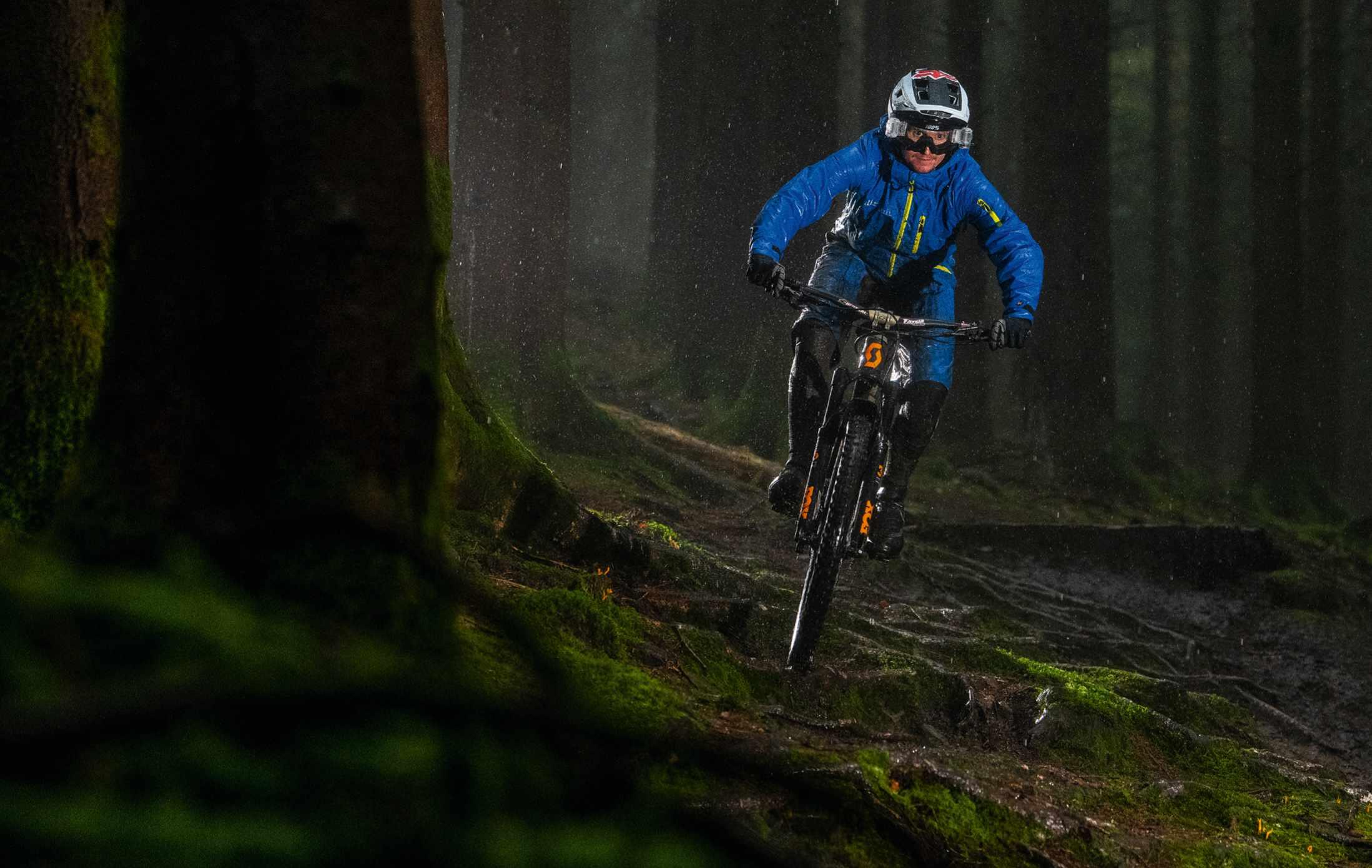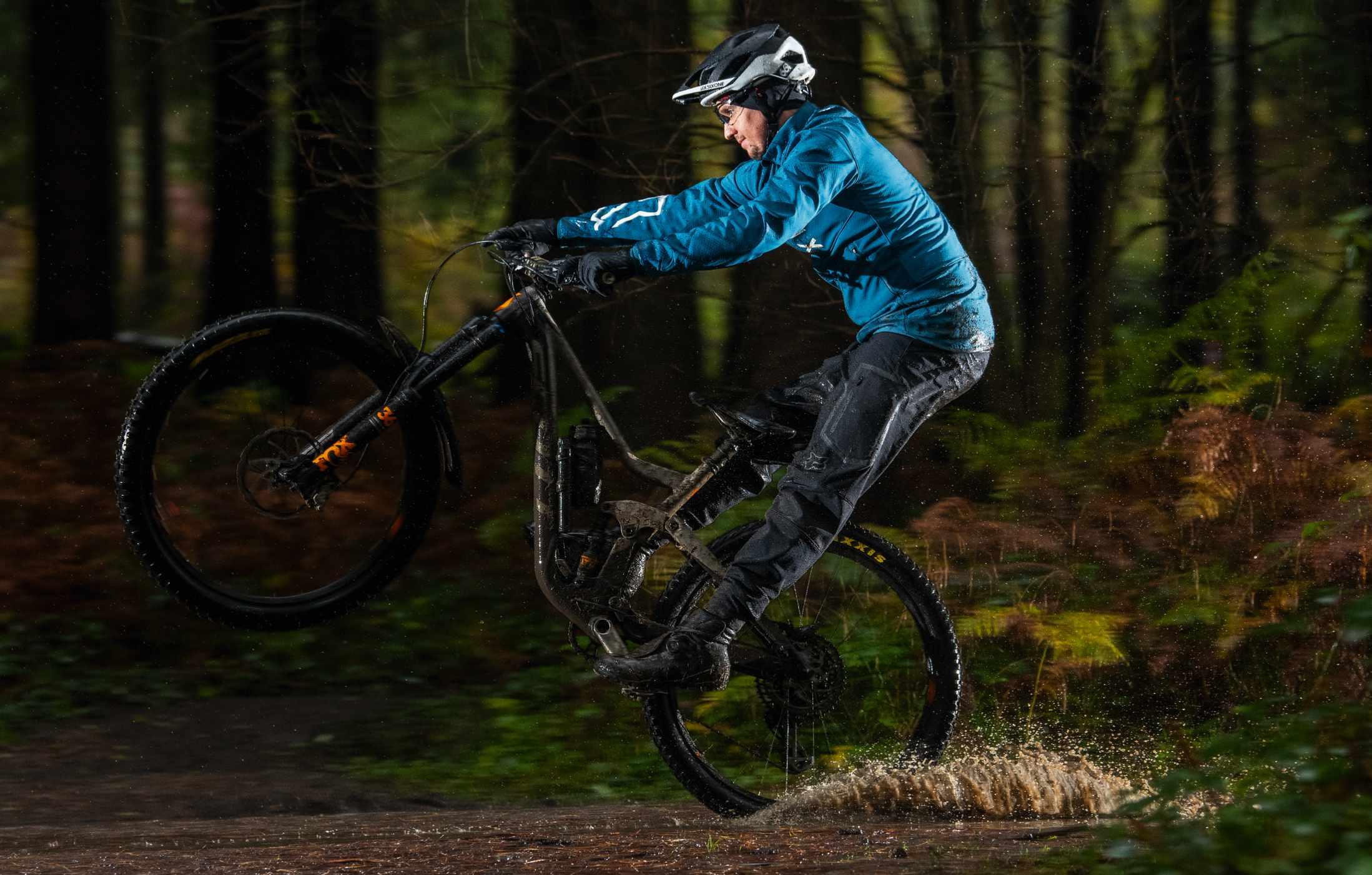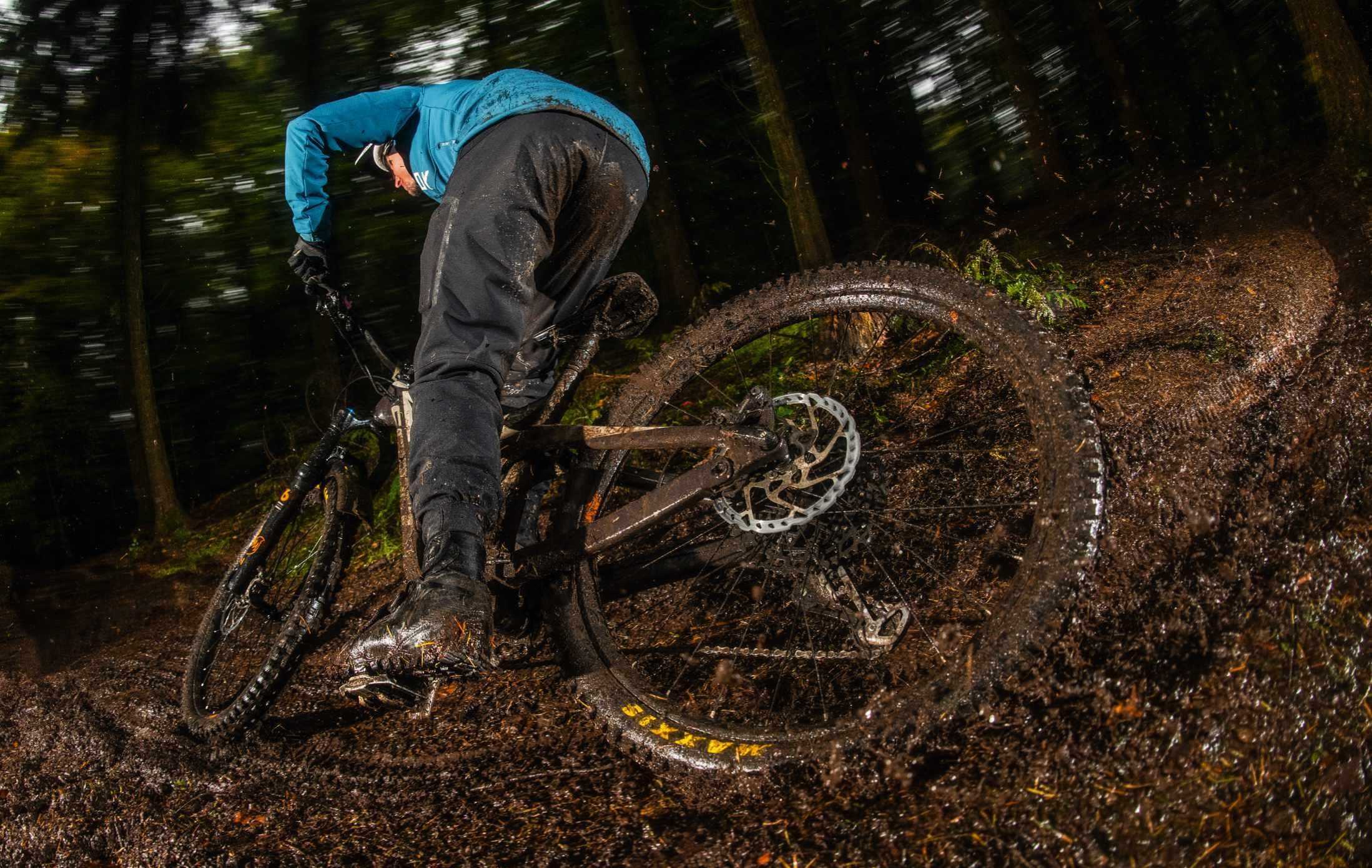
4 minute read
Master mud
wet-weather kit
1. EYE PROTECTION
Protecting your eyes from trail spray, mud and rain will improve your ride no end. If you don’t have to stop to clear muck and grit out of them, you’ll be able to concentrate on the trail ahead and maximise your fun. We like goggles in winter, especially for bike park duties, because of the extra protection. For XC rides, riding glasses with large, untinted lenses work best.
2. GLOVES
Your extremities will be the first things to get cold, so a warm pair of gloves is essential. It’s tricky to find designs that balance warmth and water-resistance with a good feel on the bar, but 100%’s Briskers are a solid choice.
3. WATERPROOF GEAR
Here in the UK, you’re inevitably going to get wet riding in winter, so a good set of waterproofs can massively improve comfort. If you’re heading out for a long ride, a decent jacket with good breathability, combined with some waterproof shorts and a pair of MTB tights underneath, is invaluable. Heading to the bike park or sessioning trails? Something more robust is an option, like the Dirtlej one-piece waterproof suit seen here.
4. FOOTWEAR
Your feet are right in the firing line of puddles and are sure to get soaked. A pair of winter riding boots like these Shimano MW7s will make a world of difference to your toes. With a waterproof Gore-Tex liner and some insulation, they’ll allow you to ride all day in comfort. Add some waterproof socks to help keep your feet warm if your shoes do soak through – or if you ride flat pedals, in which case there aren’t many waterproof shoes available.
MASTER MUD
cold -weather kit
1 NECK/HEAD WARMERS Cold wind can nip at your ears and blow down your collar, so it’s a good idea to protect these parts with Buff-style neck tubes, which can also be folded up to form a headband. When the mercury really plummets, an underhelmet skullcap can be a lifesaver.
2 THERMAL OUTERWEAR This is the kit that’s going to keep the wind and the chill out. When it’s not wet, softshell materials offer more breathability and comfort than full-on waterproofs. We like riding in trousers when it’s cold, and a jacket with wind protection is a must. Fox’s Fire range has some good options. 3 BASELAYERS You can add or remove clothing to suit the conditions, but your baselayer stays put, so it’s essential to ensure you have a decent one. Merino wool is good for staying warm when wet, but it isn’t as breathable as some synthetic materials, so it’s more likely to become damp in the first place.
4 GILET Sleeveless vests are great for getting your core up to the right temperature, while not being as hot or bulky as a full jacket, and also allowing free movement of your arms. Stuff one in your pack for emergencies or to sling on for long descents.
BODY POSITION
When riding through mud, your bike is likely to move around underneath you more. Keeping a central position with your elbows up and knees wide will allow the bike some room to move without losing balance. Try to keep your pedals level, because this will provide you with a stable platform.
ROOTS AND ROCKS

Wet roots and rocks are the most difficult obstacles, and there’s no magic hack to make them grippy, but there are a few tactics you can use to give yourself an advantage. Try to ride over any roots at 90 degrees, or as close to that as possible, to prevent your tyres slipping. It’s best to control your speed before hitting any root sections so you can ride over them without touching the brakes, or as little as possible – that’s a surefire way to lose grip. Also, riding ‘light’ can help, because you apply less pressure through the tyres. Remember, as always, to look where you want to go. Spot an area of smooth ground or a good braking zone further down the trail and aim for that.

MASTER MUD
BLUE TRAIL SKILLS


SLIPPERY CORNERS
Wet and muddy flat turns can really interrupt your riding flow. Decent tyres make a big difference, but your body position can help too. Dropping the outside pedal and leaning the bike over without tipping your body will help you get the most weight possible on the tyres, for grip. Try not to make any sharp movements in the turn, or brake aggressively, because this will make the bike slide out. Avoid shiny-looking surfaces too, because these are almost always greasy.
PUDDLES
Riding through puddles is one of the easiest ways to end up soaked through. If you can lift your front wheel over them, you’ll save yourself some very wet feet. To manual across them, shift your hips back over the rear wheel axle, while driving your feet forward and keeping your arms straight. Practising this skill in a car park first (on flat pedals) is a great way to learn it properly, then you can take it onto the trails.











